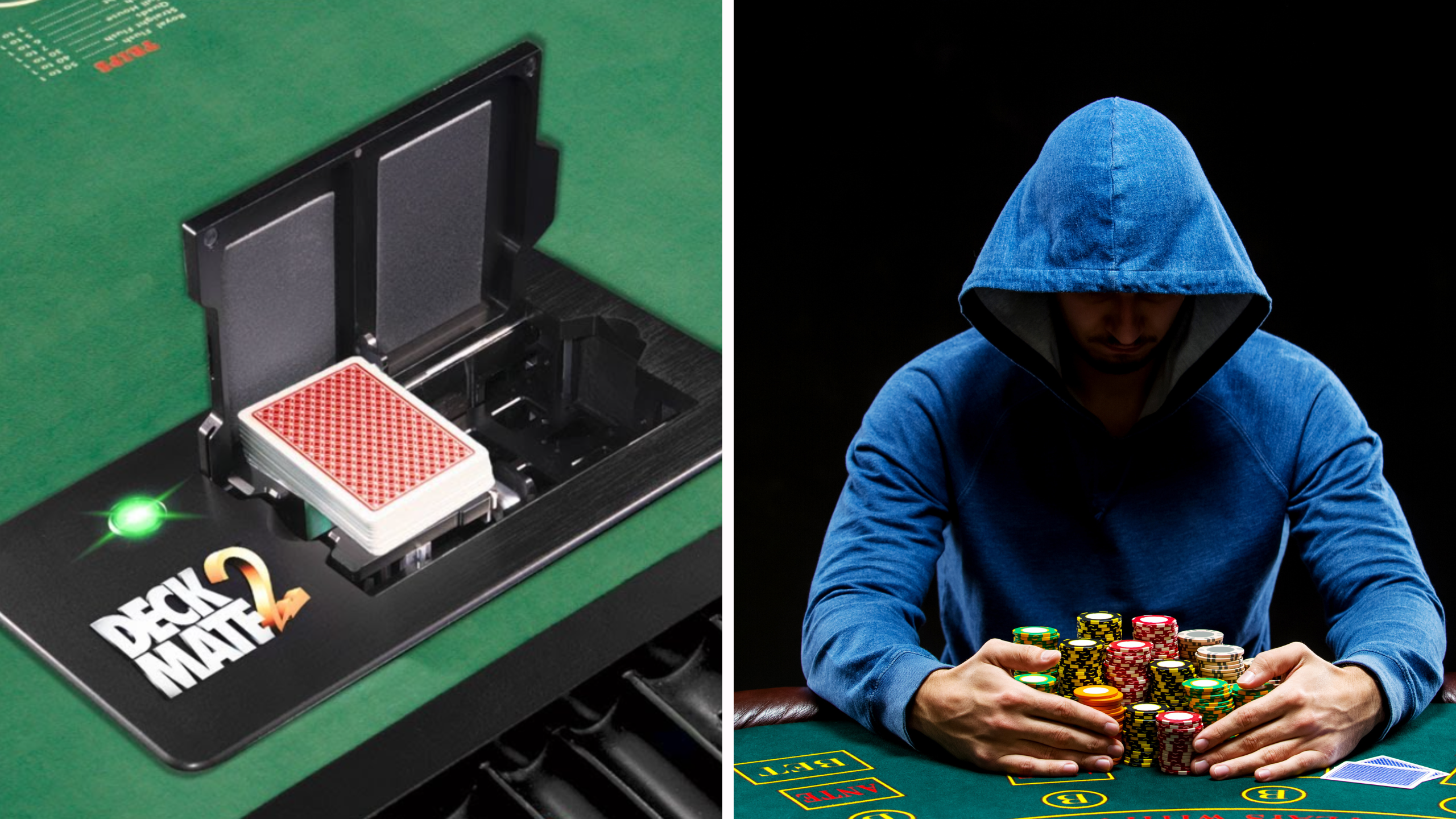Hacking the Card Shuffler
The Deckmate 2 card shuffler, developed by SHFL Entertainment, is one of the most widely used automatic shufflers in poker rooms and casinos. Its job is to ensure that the cards are shuffled randomly and to speed up the game. However, journalist Andy Greenberg from WIRED, alongside hacker Joseph Tartaro from IOActive and casino cheating expert Sal Piacente, uncovered serious flaws.
In a lab setting, hackers inserted a small circuit—smaller than a playing card—into the USB port and reprogrammed the shuffler. This allowed them to manipulate the dealing sequence: from a “Casino Royale” scenario where multiple players receive strong hands, to ensuring a specific seat at the table always gets the winning hand, regardless of the deck distribution. An onboard camera further allowed real-time monitoring of card distribution, revealing who held the winning hand. The entire process was subtle and virtually undetectable.
These findings were demonstrated at the Def Con hacker conference in Las Vegas and subsequently tested in a simulated game with four players, two of whom were unaware of the cheating. Greenberg successfully cheated with Tartaro’s help despite lacking advanced poker skills. Sal Piacente, an expert in game integrity, called the demonstration “disturbing” and noted that wherever there’s money, someone is always looking to steal it.
Manufacturer's Response
Launched in 2012, the Deckmate 2 followed the original version from 2002. After acquisitions, it moved from SHFL Entertainment through Bally Technologies to Light & Wonder. Following suspicions in 2022, arising after a controversial hand at Hustler Casino Live between Garrett Adelstein and Robbie Jade Lew, the manufacturer claimed their shufflers couldn't be compromised.
Joseph Tartaro and the IOActive team decided to test this claim and, as noted above, succeeded in manipulating the device. They sent their findings to Light & Wonder, which in 2025 stated they had updated the firmware on all devices. Since the shufflers aren't connected to the internet, updates must be manually applied by technicians, increasing the risk of inconsistencies. However, Light & Wonder did not acknowledge any issues and told WIRED: “None of our shufflers have ever been compromised in a regulated casino environment.”
Despite this, a video from October 2025 suggests that the shuffler's vulnerability persists, at least in lab conditions, raising doubts about its true security.
Cheating in Poker
The poker world has faced several cheating scandals. This year alone, three men in Texas were caught using decks with RFID chips and a table reader. Another case in France revealed the use of tiny earpieces removable only with a magnet, as demonstrated to Wired by Sam Piacente. To this day, accusations of cheating against Mike Postle remain unsolved. His strange behavior at the table, coupled with an unorthodox and extremely successful game in 2019, led many poker personalities to suspect foul play, which was neither proven nor dismissed by ongoing legal battles.

These incidents show that while technology generally enhances game security, it can also be exploited to breach the integrity of the game. Players thus face the unusual obligation to monitor shuffler manipulation or request manual shuffling in suspicious situations. Compared to live poker, online platforms are protected by stricter security protocols such as random number generators (RNG). However, in casinos, security depends on physical measures and human vigilance.
Necessity for Enhanced Security
The revelations about Deckmate 2 are not just a sensation but, more importantly, a warning. Casinos must continue investing in stricter security measures like regular audits and advanced encryption. Players should remain vigilant yet continue to enjoy the game without paranoid assumptions about cheating behind every loss. Poker has withstood many scandals and can emerge stronger with improved security standards.
Sources: Wired, YouTube, Wikipedia




